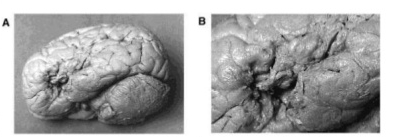Answer: Patients with Broca’s aphasia will have a very halted speech pattern with a difficulty understanding speech and a loss of grammar.
Broca’s aphasia is often the result of some injury to the frontal lobe of the left hemisphere of the brain, usually Brodmann areas 44 and 45. Unlike many brain functions which both hemispheres of the brain can perform, language processing and speech production is carried out by the left hemisphere in a majority of humans.
Broca’s aphasia is also sometimes called “nonfluent” aphasia. Patients do not speak fluently, and will pause frequently during speech. It is also called “expressive aphasia” because the patients often know what they want to say, but are unable to find the words to express it. Patients with Broca’s aphasia often become frustrated since this disconnect exists.
While speaking, they often do not use conjunctions or articles. Usage of nouns and verbs will sometimes remain intact. Tenses are often lost in Broca’s aphasia. Usually, comprehension of speech is kept intact. As a result, there is often a disconnect between the person's comprehension of language and their production of an appropriate response, leading to frustration.
There is no certain treatment for Broca’s aphasia, however, speech therapy can be effective over several years.
Compare Broca’s aphasia with Wernicke’s aphasia, which is also called fluent aphasia. These people have difficulty in making an appropriate response, although their speech is continuous and unhalting.
Broca’s aphasia was first described by French neurologist Paul Broca in 1861.




